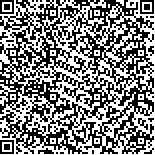| 常 远,洪 梅.预测食管癌患者放疗后放射性食管炎风险列线图模型的建立[J].肿瘤学杂志,2022,28(3):212-218. |
| 预测食管癌患者放疗后放射性食管炎风险列线图模型的建立 |
| Establishment of Prediction Model for Risk of Radiation Esophagitis in Patients with Esophageal Cancer After Radiotherapy |
| 投稿时间:2021-09-13 |
| DOI:10.11735/j.issn.1671-170X.2022.03.B009 |
|
 |
| 中文关键词: 食管癌 放射性食管炎 危险因素 预测 列线图模型 |
| 英文关键词:esophageal cancer radiation esophagitis risk factors prediction Nomogram model |
| 基金项目:2017年度南京市医学科技发展项目(ZKX17110) |
|
| 摘要点击次数: 1000 |
| 全文下载次数: 310 |
| 中文摘要: |
| 摘 要:[目的] 构建个体化预测食管癌患者放疗后放射性食管炎的风险列线图模型,并对模型的预测效能进行验证。[方法] 选取2018年9月至2020年10月期间在南京脑科医院胸科进行放射治疗的176例食管癌患者作为研究对象,采用Lasso回归分析和Logistic回归分析筛选食管癌患者放疗后发生放射性食管炎的独立危险因素,并构建列线图预测模型。[结果] 176例食管癌患者中有54例放疗后发生放射性食管炎,其发生率为30.68%(54/176)。Logistic回归分析结果表明:糖尿病(OR=3.436,95%CI:1.498~7.883)、高血压(OR=3.993,95%CI:1.724~9.248)、同步化疗(OR=2.33, 95%CI:1.047~5.184)、分割方式为超分割(OR=2.903,95%CI:1.313~6.419)、照射剂量≥30 Gy(OR=4.267,95%CI:1.871~9.732)、食管V50≥40%(OR=2.505,95%CI:1.132~5.542)是食管癌患者放疗后发生放射性食管炎的独立预测因素(P<0.05)。基于6项危险因素建立预测食管癌患者放疗后发生放射性食管炎的列线图模型,并对该模型进行验证。C-index为0.834(95%CI:0.803~0.866),模型校正曲线与理想曲线接近,ROC曲线下面积(AUC)为0.818(95%CI:0.791~0.845);决策曲线显示阈值概率在5%~80%范围内时,具有较高的净获益值,表明该模型具有良好的预测精准度。[结论] 糖尿病、高血压、同步化疗、超分割、照射剂量≥30 Gy、食管V50≥40%是食管癌患者放疗后放射性食管炎的独立预测因素。基于独立预测因素建立的列线图模型具有较好的预测效能,有助于临床及早筛查高风险患者和进一步改进治疗计划。 |
| 英文摘要: |
| Abstract:[Objective] To construct and verify a prediction model for the risk of radiation esophagitis in patients with esophageal cancer after radiotherapy. [Methods] The clinical data of 176 patients with esophageal cancer who underwent radiotherapy in the Thoracic Department of Nanjing Brain Hospital from September 2018 to October 2020 were retrospectively analyzed. The independent risk factors for radiation esophagitis in patients with esophageal cancer after radiotherapy were determined with Lasso analysis and Logistic regression analysis, and a Nomogram prediction model was constructed and verified. [Results] Of 176 patients with esophageal cancer, 54 cases developed radiation esophagitis after radiotherapy with an incidence of 30.68%(54/176). Logistic regression analysis showed that diabetes(OR=3.436, 95%CI: 1.498~7.883), hypertension(OR=3.993, 95%CI: 1.724~9.248), concurrent chemotherapy(OR=2.33, 95%CI: 1.047~5.184), hyper segmentation(OR=2.903, 95%CI: 1.313~6.419), radiation dose ≥30 Gy(OR=4.267, 95%CI: 1.871~9.732), esophageal V50≥40%(OR=2.505, 95%CI: 1.132~5.542) were independent predictors of radiation esophagitis after radiotherapy in patients with esophageal cancer(P<0.05 ). Based on risk factors, a Nomogram model was established to predict radiation esophagitis in patients with esophageal cancer after radiotherapy, and the model was validated. The results showed that the C-index was 0.834(95%CI: 0.803~0.866), the model calibration curve was close to the ideal curve, the area under the ROC curve(AUC) was 0.818(95%CI: 0.791~0.845), and the decision curve showed that the threshold probability was in the range of 5% to 80%, it had a higher net benefit value. All of the above indicated that the model had good prediction accuracy. [Conclusion] Diabetes, hypertension, concurrent chemotherapy, hyper segmentation, radiation dose ≥ 30 Gy, and esophagus V50≥40% are independent predictors of radiation esophagitis after radiotherapy in patients with esophageal cancer. The Nomogram model established in the study has the good predictive performance, which is helpful for early clinical screening of high-risk patients and further improvement of treatment plans. |
|
在线阅读
查看全文 查看/发表评论 下载PDF阅读器 |